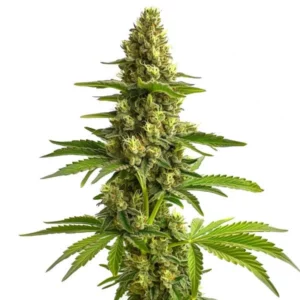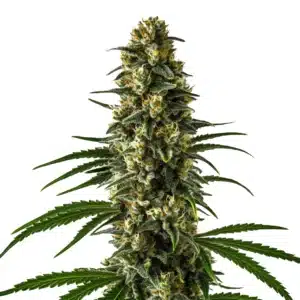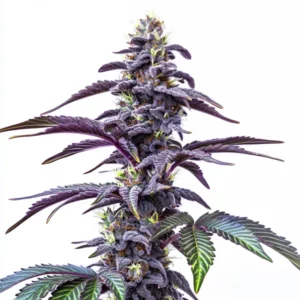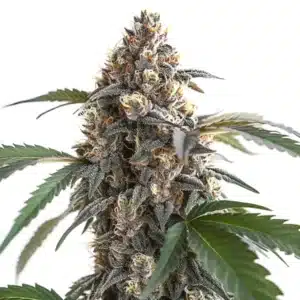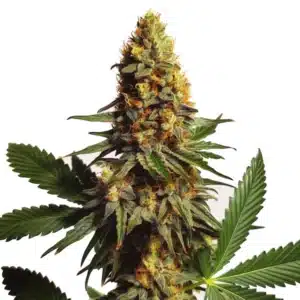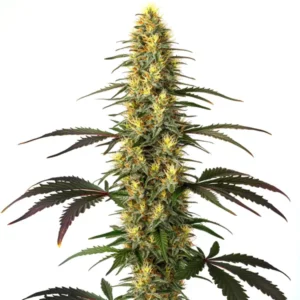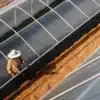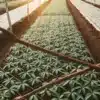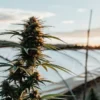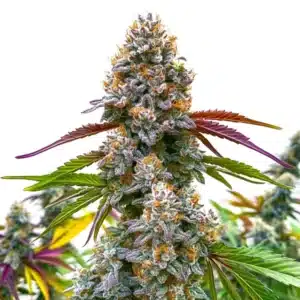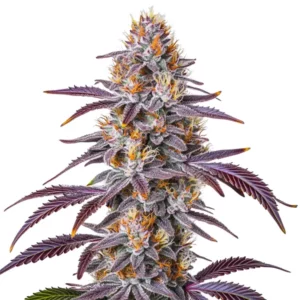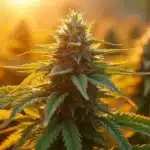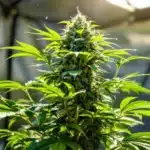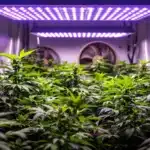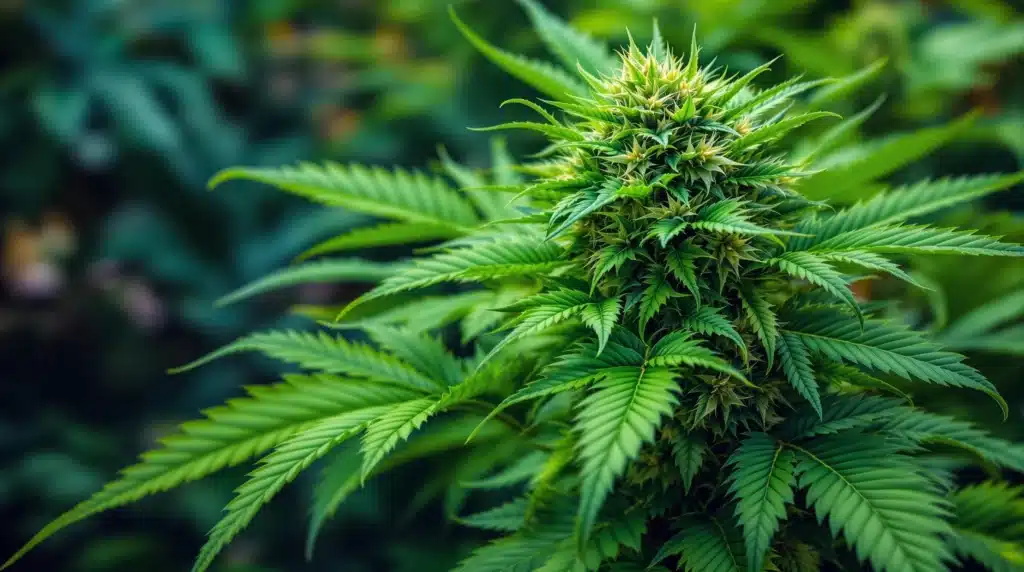
How to Grow Bruce Banner #3 Cannabis Seeds Indoors
If you’re looking to cultivate Bruce Banner #3 cannabis seeds indoors, you’re making a fantastic choice. This strain is recognized for its vigorous growth and impressive yields. With a perfect blend of effects, a potent THC content, and delightful flavors, it’s no wonder many growers are drawn to it. In this article, we’ll guide you through each step to ensure your indoor growing experience is a success, from choosing your seeds to the final product.
Choosing Your Seeds
Selecting the right seeds is the foundation of your cultivation journey. Bruce Banner #3 seeds are celebrated for their resilience and abundant yields. When purchasing seeds, it’s crucial to choose reputable sources, such as specialized seed banks, to ensure you’re getting authentic and well-cultivated options. These seeds typically germinate well, setting you up for a strong start in your growing endeavor.
Recommended Strains
Bruce Banner #3
-
THC: 20% - 29%
-
Type of seed: Feminized
-
Phenotype: 50% Sativa / 50% Indica
-
Flavor: Earthy, Fruity, Sweet
-
Day to flower: 8 - 10 weeks
Girl Scout Cookies
-
THC: 18% - 25%
-
Type of seed: Feminized
-
Phenotype: 55% Sativa / 45% Indica
-
Flavor: Fruity, Sweet
-
Day to flower: 8 - 10 weeks
South African
-
THC: 18% - 20%
-
Type of seed: Feminized
-
Phenotype: 90% Sativa / 10% Indica
-
Flavor: Fruity, Pineapple, Sweet
-
Day to flower: 8 - 10 weeks
Pineapple Chunk
-
THC: 22% - 25%
-
Type of seed: Feminized
-
Phenotype: 20% Sativa / 80% Indica
-
Flavor: Cheese, Earthy, Pineapple, Skunk
-
Day to flower: 8 - 10 weeks
In addition to Bruce Banner #3, you might want to consider pairing it with complementary strains. Here are some popular options that many growers enjoy:
- Girl Scout Cookies: Known for its sweet and earthy flavors, this hybrid complements Bruce Banner #3 beautifully.
- African Buzz: This strain is noted for its uplifting effects and fruity undertones, making it a delightful addition.
- Pineapple Chunk: With its tropical flavor and relaxing effects, it pairs well with Bruce Banner #3 for a well-rounded cultivation experience.
By doing some research and exploring different strains, you can create a diverse and enjoyable growing environment. Remember, the seeds you choose will greatly influence your overall experience.
Promos & Deals
Setting Up Your Grow Space
Setting up an optimal growing environment for your plants is essential for their success and wellbeing. Whether you opt for a grow tent or a designated room in your home, ensure it can provide ample space and the right conditions for your plants. Here are several key factors to consider while setting up your space:
- Lighting: Proper lighting is critical for plant growth. Consider using LED or HPS lights, which provide the necessary intensity for healthy growth.
- Temperature: Maintain a temperature range of 70 to 80 degrees Fahrenheit during day hours, allowing for slightly cooler temperatures at night to mimic natural conditions.
- Humidity: Aim to keep humidity levels around 40-60% during the vegetative stage and reduce them to 30-40% during the flowering phase.
Creating a balanced environment is not just a one-time task. Regularly monitoring these elements is crucial to keeping your plants thriving. Investing in essential tools like thermometers and hygrometers can greatly assist in maintaining optimal conditions.

Germination Process
The germination process for Bruce Banner #3 seeds is relatively simple and can yield fantastic results if done correctly. Generally, these seeds require a damp environment to encourage sprouting. Here’s a straightforward method to follow:
- Start by soaking the seeds in a glass of water for 24 hours to absorb moisture effectively.
- Next, transfer the seeds to a damp paper towel, folding it over to cover them.
- Seal the towel in a zip-lock bag to retain humidity and place it in a warm, dark location.
- Check daily for sprouts and ensure there’s enough moisture in the towel to sustain the seeds.
When you notice the seeds sprouting, it’s time to transfer them to a suitable growing medium. Depending on your experience and preference, you may choose between soil or hydroponics for the next stages of growth.
Choosing the Right Growing Medium
Your choice of growing medium is a significant factor that affects the health and growth rate of your plants. Soil and hydroponics are the most popular options among growers. Soil is often favored for its ease of use and inherent nutrient availability, while hydroponics allows for precise control over nutrient delivery, often resulting in faster growth rates. Here are some points to consider when making your choice:
- Soil: Opt for a high-quality potting mix that contains perlite or vermiculite to improve drainage and aeration.
- Hydroponics: Look into systems like deep water culture or nutrient film technique, which can dramatically accelerate plant growth.
Regardless of your choice, ensure that the growing medium allows for good drainage and airflow. This helps prevent issues like root rot and promotes healthy development throughout the growth cycle.
Nutrient Requirements
Nutrients are the lifeblood of your cannabis plants, influencing their growth and overall health. Different growth stages require distinct nutrient ratios. During the vegetative phase, your plants will thrive on higher levels of nitrogen for robust leaf and stem growth. In contrast, the flowering phase requires increased phosphorus and potassium to support bud development and overall vitality.
When selecting fertilizers, consider using high-quality options specifically designed for cannabis cultivation. Many growers prefer organic fertilizers for a more natural flavor and enhanced soil health. Always follow the manufacturer’s feeding schedule, and keep a close eye on your plants for any signs of nutrient deficiencies or excesses.
Watering Your Plants
Watering your cannabis plants correctly can be tricky initially, but it is essential for their health. Bruce Banner #3, like many cannabis strains, prefers a well-draining environment, so be mindful of overwatering, which can lead to various issues. Here’s how to water effectively:
- Water thoroughly until you observe drainage from the bottom of the pot.
- Let the top inch of the growing medium dry before watering again to prevent over-saturation.
- Avoid letting your plants sit in standing water, as this can lead to root rot and other complications.
Establishing a consistent watering schedule will help your plants build resilience and thrive. As conditions change with your plants’ growth, adjust your watering frequency and amount accordingly to meet their needs.
Light Cycles
Light cycles are critical for the different life stages of your plants. During the vegetative stage, it’s ideal to provide around 18 hours of light and 6 hours of darkness each day, as this duration encourages robust growth. Lighting during this phase promotes healthy leaf and stem formation, setting a solid foundation for the future.
As your plants transition into the flowering stage, shift the light cycle to provide 12 hours of light followed by 12 hours of darkness. This change mimics the natural seasonal shifts and signals your plants to begin blooming, ultimately leading to a bountiful harvest.
Pest and Disease Management
Maintaining a clean and organized grow area is vital for preventing pests and diseases from negatively impacting your plants. Regular inspections are essential; look for signs of wilting, discoloration, or the presence of webs. Some common pests include spider mites and aphids, which can be managed through various effective strategies:
- Maintain good airflow around your plants to help reduce humidity, which deters many pests.
- Consider introducing beneficial insects like ladybugs that naturally prey on common pests.
- Utilize organic insecticidal soaps or neem oil sprays as preventative measures to protect your plants.
Being proactive about pest management not only safeguards the health of your plants but also contributes to a successful harvesting process. The more knowledgeable you are about potential threats, the better prepared you’ll be to mitigate them.
Harvesting Your Plants
Understanding the right time to harvest your cannabis is crucial to achieving optimal flavor and potency. Bruce Banner #3 generally flowers within about 8 to 10 weeks. During this critical period, closely monitor the trichomes using a magnifying glass. You want to aim for a blend of cloudy and amber trichomes, as this balance indicates peak potency and flavor.
When it’s time to harvest, grab a pair of clean, sharp scissors to trim away the branches. Handle your buds gently to minimize damage and retain vital oils. After harvesting, hang the branches in a dark, well-ventilated area to dry safely.
Curing Your Buds
Curing your cannabis buds is an essential step that enhances their flavor and potency. Once your harvested buds are sufficiently dry, place them in airtight jars. Be sure not to overpack them, as this can restrict airflow, leading to undesirable results. Opening the jars daily for a few minutes allows any remaining moisture to escape while ensuring that the buds cure properly.
Allow the buds to cure for at least two weeks, though some growers opt for longer periods for even better flavor and effects. The process of curing not only enhances the overall quality of your final product but also transforms the experience for you and anyone fortunate enough to enjoy your harvest.

How to Grow Bruce Banner #3 Week a Week
WEEK 1 – 3
In the first three weeks, the plants are 18 days old. The PH of the crop ranges between 5.6 and 5.8. To feed the plant, mycorrhizae, stimulants and growth fertilizers are used. Besides, a stimulator is used, to avoid the stress of the plants. In the first week, the lamp was 70 cm from the plant, then in the second the distance was increased to 80 cm. Finally, the lamp was at 40 cm.
NUTRIENTS
First of all, mycorrhizae are used in the irrigations to micorizes to the roots and their growth. We use a small dose of 0.65ml/L. Also, the plants are watered with a growth stimulant that complements the nutrition of the first weeks.
Now, in the week 2, a root stimulant is used in an amount of 0.3ml / L and a stimulant to reduce the stress of the plant in an amount of 2ml/L. In the third week, the PH of the nutrients is leveled with a -PH regulator, in a ratio of 0.3ml/l.
This is done, since the plant begins to be nourished with more fertilizers. Mycorrhizae (0.63ml/l), growth fertilizer (1ml/l) and growth stimulator (1.5ml/l) are added.
WEEK 4 – 9
At this time, which is the fifth week of vegetation, the plants are defoliated. The lamp is kept between 40 and 35 cm away from the plants. Bruce Banner #3 grows to 28cm. In week 9 they meet 60 days in growth and in addition, LST is applied to the plant.
In week 8, a 19L pot is transplanted.
NUTRIENTS
In week 5, new fertilizers such as Vitamins are added, until week 9.
Vitamins help the plant to develop in a healthier way and avoid possible diseases. In this period, some fertilizers and stimulants are also removed, according to the plant’s need. At this point, it is necessary to say that bacteria are delivered to it that stimulate the absorption of nutrients and help the nutrition of the plant. The PH is kept between 5.6 and 6, regulators are used to raise and lower PH.
In week 8, a 19L pot is transplanted.
WEEK 10 – 14
From week 10 to 14, the plants grow from 50cm to 90cm in height.
The plant lamp is brought closer to stimulate flowering and the penetration of light between the nascent leaves and flowers. He also moves away from time to time, to avoid some kind of light stress.
In week 11, the lateral branches are broken to stimulate them to bloom. In addition, defoliation is made, with the latter it is sought to have a much more explosive flowering and help the light to penetrate the plant in a good way.
In week 14, it celebrates 35 days of flowering.
NUTRIENTS
In week 10. It begins to be watered with stimulants and flowering fertilizers. In addition, mycorrhizae are used to help the plant in this new phase. Here too, the plant is watered with a nutrient to avoid deficiencies, which can occur when it starts flowering.
In week 11, vitamins are reoccupied and trichodermas are added. The latter help to keep the plant healthy and avoid pests, fungi or diseases during flowering. Trichodermas are used preventively.
Between weeks 12 to 14, flowering feeders are included with doses of 1 to 1.5ml/l. Flowering fatteners increase their amount of use as flowering progresses.
WEEK 15 – 19
Week 18 fulfilled the 63rd day of flowering and irrigation was done only with purified water.
For week 19 of flowering and after 60 hours of darkness, so that the trichomes of the plant explode, we proceed to the harvest of Bruce Banner #3.
The PH in week 14 is 6.4, for week 19 it ends in 7.
NUTRIENTS
The + PH and -PH regulators are occupied in this phase, since they help to maintain a plant that absorbs nutrients in a good way.
An important point is that in week 15 a flavor and odor enhancer is used in a dose of 3ml/l.
Then at week 16 and 17 the dose is decreased to 1.5ml/l.
In week 18 the amount of fertilizers and stimulants is decreased to irrigate only with purified water.
At week 19 bacteria are used to help plant roots.
FAQs
What is the ideal environment for growing Bruce Banner #3?
Creating an ideal environment involves maintaining specific temperature ranges (70-80°F during the day) and humidity levels (40-60% during the vegetative stage and 30-40% during flowering). Good lighting, air circulation, and cleanliness also play significant roles in a successful grow.
How long does it take for Bruce Banner #3 seeds to germinate?
Typically, the germination process for Bruce Banner #3 seeds takes about 1-7 days, depending on conditions. Following the damp paper towel method outlined above can enhance germination success and speed.
Can I grow Bruce Banner #3 in a hydroponic system?
Absolutely! Many growers find that Bruce Banner #3 thrives in hydroponic systems. Hydroponics allows for precise nutrient management and can lead to quicker growth and higher yields compared to traditional soil growing.
What are the common problems when growing Bruce Banner #3 cannabis?
Common issues include overwatering or underwatering, nutrient deficiencies or excesses, and pest infestations. Regular monitoring of your plants, adjusting environmental conditions, and maintaining cleanliness can help prevent these problems.
When is the best time to harvest Bruce Banner #3?
The optimal time to harvest Bruce Banner #3 is typically 8-10 weeks into the flowering stage. Keep a close watch on the trichomes, aiming for a mix of cloudy and amber to ensure the best flavor and potency.

